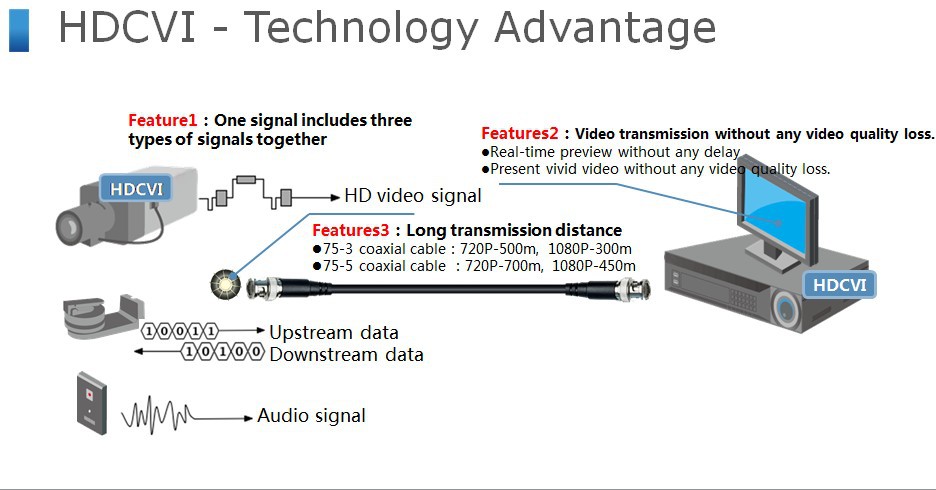If you're concerned with security at your home or business, chances are you've heard of, at least in passing, HDCVI (High Definition Composite Video Interface) technology and its highly-touted advantages, adaptability, and ease of use. Whether for residential or commercial purposes, video camera systems are an indispensable component of property security, and as demand rises for higher resolution, greater detail, and increased performance, HDCVI steps up to the plate to deliver modern, high-performance video quality at an extremely low cost.
Analog systems are the most common video surveillance system found in practical use today and while both cheap and ubiquitous, they're also limited by their resolution and technological constraints. The highest resolution you're bound to get with an analog system is 940x480, which is not only archaic but limited in its practical application due to the comparative lack of detail when weighed against today's video technology. HDSDI and IP camera systems, by contrast, offer much higher resolution and greater detail but carry the disadvantage of high prices and installation costs.
HDCVI, or High Definition Composite Video Interface, is a remarkable technology designed to bridge the gap between existing analog systems and their clients' need for greater detail (and thus more secure protection) by transmitting HD data through coaxial cable, removing the need to rebuild complex analog systems in order to attain HD security footage. This makes HDCVI both cost-effective and efficient while also affording real-time performance and more reliable security through high-resolution image quality. In other words, you can build atop your current installation and use HDCVI to upgrade it rather than completely redesign it.
The potential here is no trivial matter; with HDCVI, large and complex installations can be upgraded to HD with little effort. HDCVI transmits images at 720P resolution, with the option to upgrade to 1080P, and the real-time performance and lossless image quality ensures safe, detailed observation and increased security. HDCVI achieves its low latency by encoding to the DVR in real time, and has the added bonus of being capable of audio as well as video like higher priced systems such as HDSDI and IP.
Compared to analog, HDSDI, and IP, HDCVI is vastly superior in terms of affordability, quality, efficiency, and adaptability. Given that most consumers currently own and operate analog systems, HDCVI presents a low-cost way for the vast majority of them to upgrade to HD without rebuilding their entire installations, delivering increased security and greater peace of mind.
Pros |
Cons |
| Like IP Camera Systems, HD-CVI had 1080P Cameras | IP Cameras can go up to 4K ultra HD resolution |
| Makes upgrading from analog a breeze | Must purchse Tribrid to contunue to use analog cameras or add IP cameras to your system |
| Very easy and straighforward to install | Cameras cannot be made wireless |
Here are some diagrams to help illustrate how HD-CVI works:



(images coutesy of Dahua)
All articles featured on PolarisUSA.com are original works and copyrighted by PolarisUSA Video, Inc. Site scraping or other illegal usage is strictly forbidden, and any sites found with unauthorized duplication will be issued a DMCA takedown notice. If you wish to re-use this content in a legal way, please contact webmaster[at]polarisusa.com.
Please help us improve by rating and sharing our content!
| 32430 Views | 0 Comments |  |